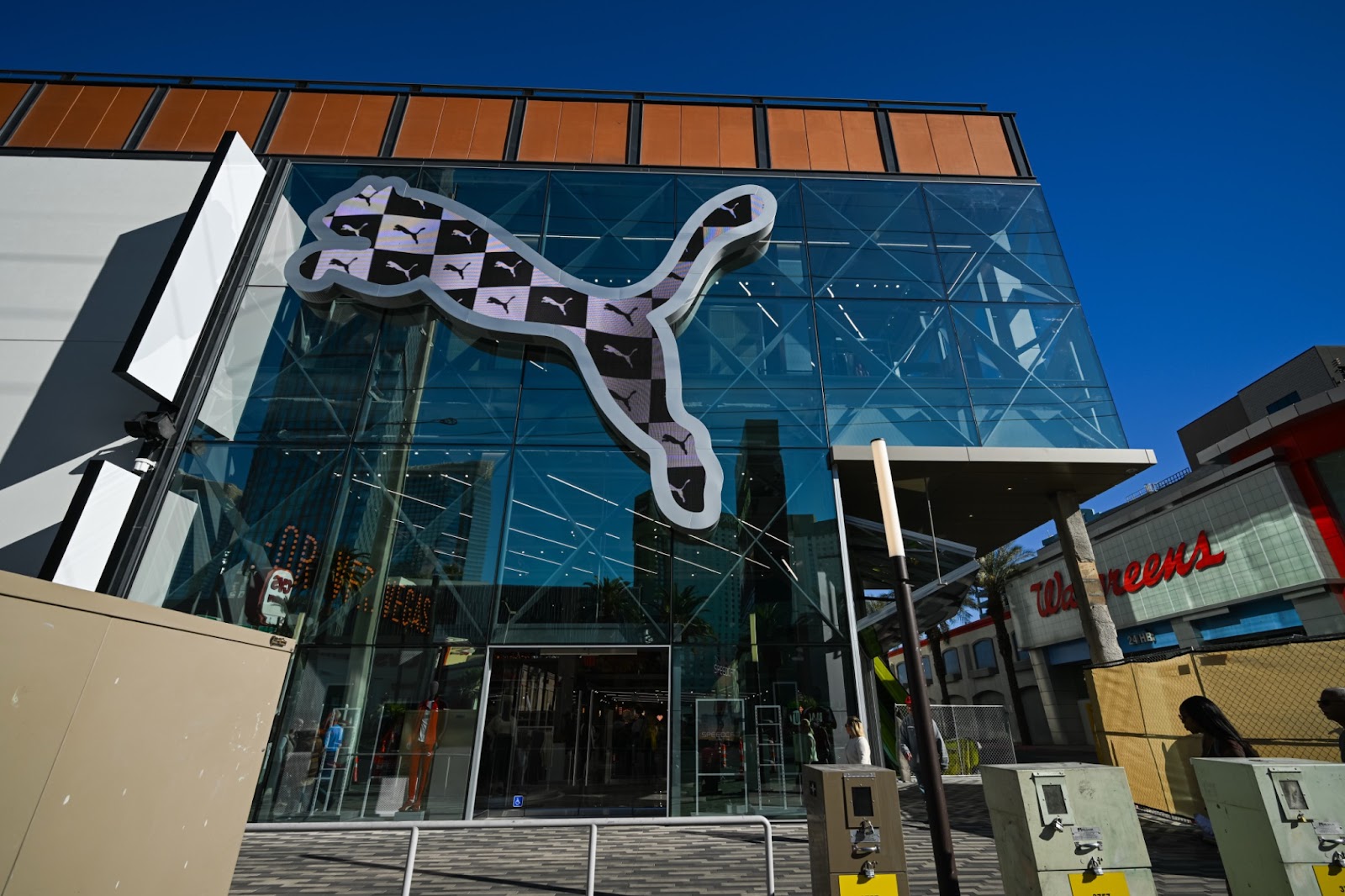
Sportswear giant PUMA has released its preliminary financial results for the second quarter of 2025 and revised its full-year forecast, citing weaker-than-expected sales performance and the impact of newly implemented U.S. tariffs.
According to the preliminary report, PUMA’s second-quarter sales declined by 2.0% on a currency-adjusted basis to €1.942 billion. Currency fluctuations posed a significant headwind, reducing sales in euro terms by approximately €135 million, or 8.3%.
The sales decline was primarily driven by weaker performance in key markets such as North America, Europe, and Greater China, each reporting a currency-adjusted drop of around 3.9% to 9.1%. While the rest of the Asia-Pacific region also saw a modest decline, Latin America and EEMEA continued to show positive growth.
The wholesale segment was the main contributor to the overall sales decline, decreasing by 6.3%, while the Direct-to-Consumer business saw an increase of 9.2%, led by strong double-digit growth in e-commerce. By product category, footwear sales rose by 5.1%, but this gain was offset by decreases in apparel and accessories, which fell by 10.7% and 6.4% respectively.
Gross profit margin dropped by 70 basis points to 46.1%, largely due to higher promotional activity and unfavorable currency effects. Although gains were seen in sourcing and freight as well as distribution mix, they were not enough to offset the negatives. Adjusted EBIT, excluding one-time costs, declined to € -13.2 million, impacted by both the lower sales and reduced profit margins.
One-time costs during the quarter amounted to €84.6 million, while income taxes totaled € -94.7 million, primarily due to deferred tax asset write-offs in the United States and China. The quarter ended with a net loss of €247.0 million.
For the first half of 2025, preliminary currency-adjusted sales declined by 1.0% to €4.018 billion, a 4.8% decrease on a reported basis. The gross profit margin for the half-year decreased by 60 basis points to 46.5%, and adjusted EBIT fell to €62.5 million. One-time costs during this period totaled €102.6 million, resulting in a net loss of €246.6 million. Inventory levels rose by 9.7% on a reported basis and 18.3% currency-adjusted, reaching €2.151 billion, mainly due to elevated stock in key markets.
PUMA attributed the weaker performance to several challenges, including muted brand momentum, changes in sales channels, high inventory levels, and the adverse effects of U.S. tariffs. The company no longer expects to achieve the previously anticipated currency-adjusted sales growth for the remainder of 2025. Instead, PUMA forecasts a low double-digit percentage decline in sales, compared to the earlier guidance of low- to mid-single-digit growth.
Given the continued softness in topline development, increased currency pressures, and the €80 million estimated negative impact from U.S. tariffs on gross profit, PUMA now expects to post a full-year loss in EBIT for 2025. This is a significant revision from the prior expectation of €445 million to €525 million in EBIT. The company also noted that one-off charges and further cost-alignment measures in the second half of the year would affect results.
In light of the revised outlook, PUMA has also reduced its capital expenditure plans for the year, lowering investment expectations from around €300 million to approximately €250 million.
Shahriena Shukri is a journalist covering business and economic news in Malaysia, providing insights on market trends, corporate developments, and financial policies. More about Shahriena Shukri.




